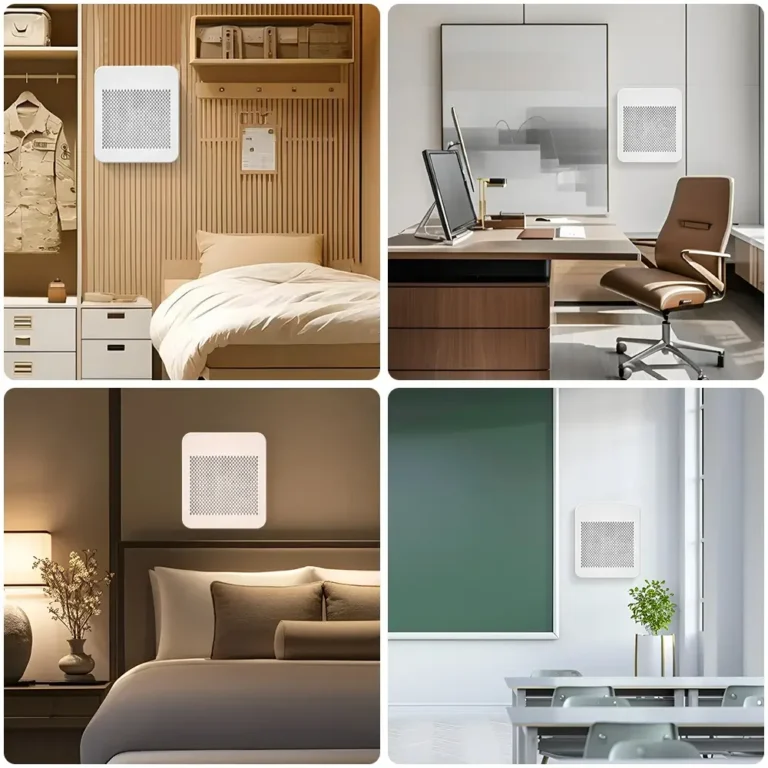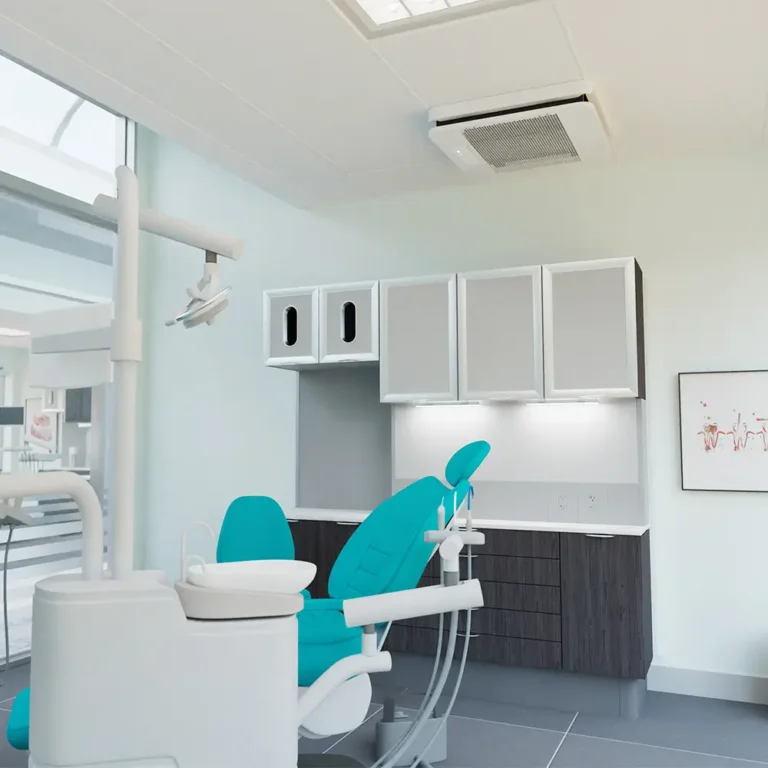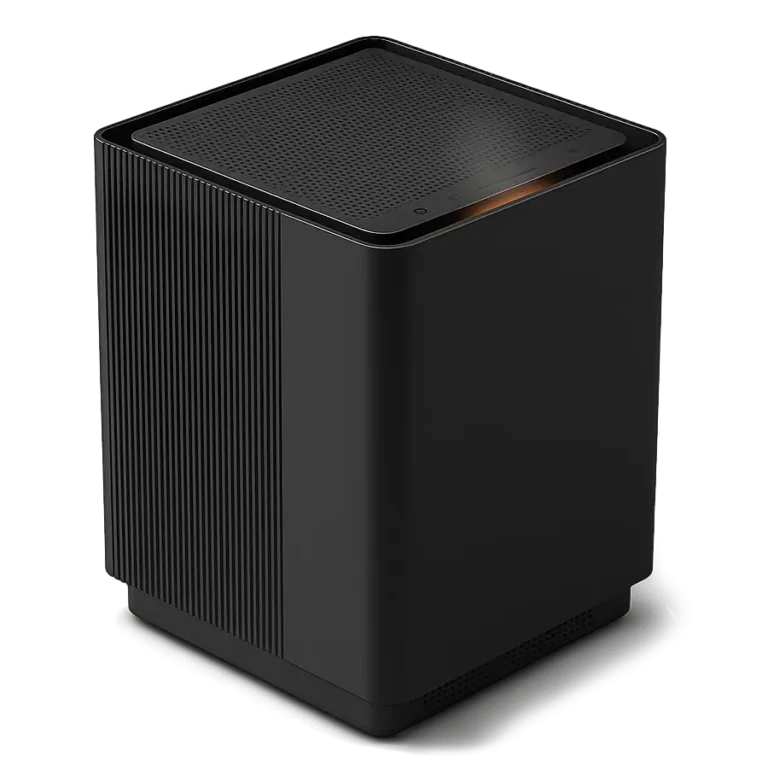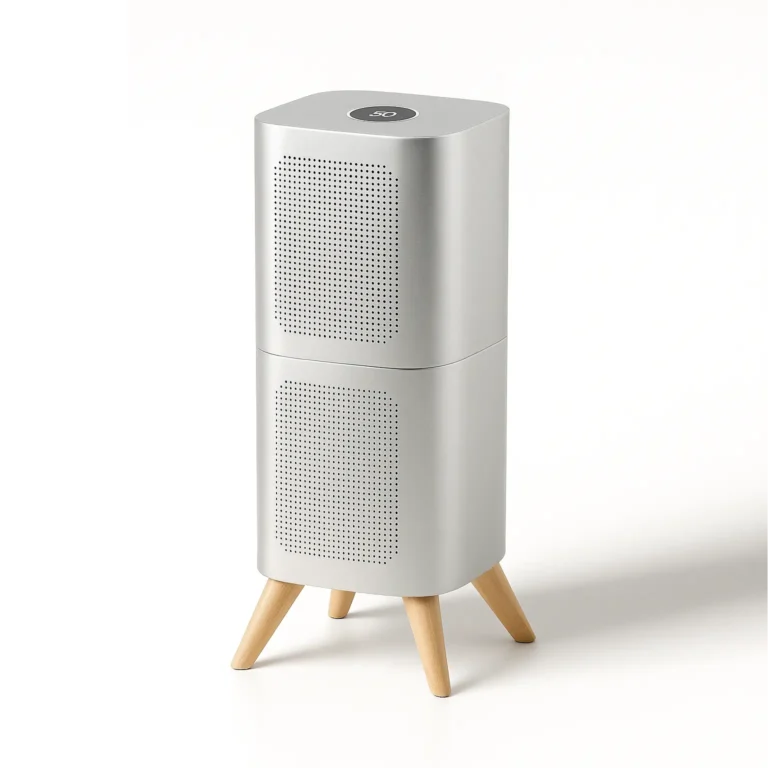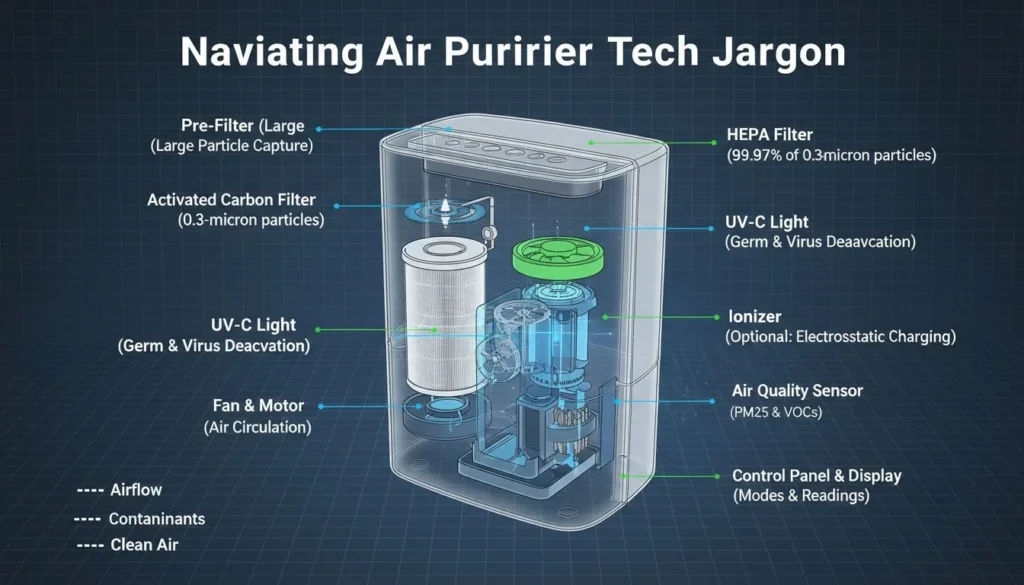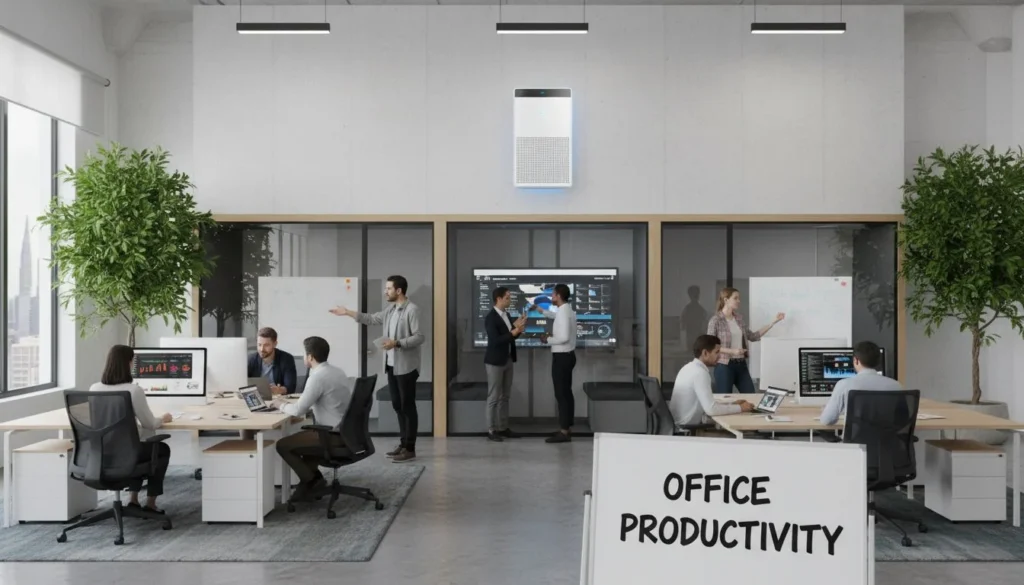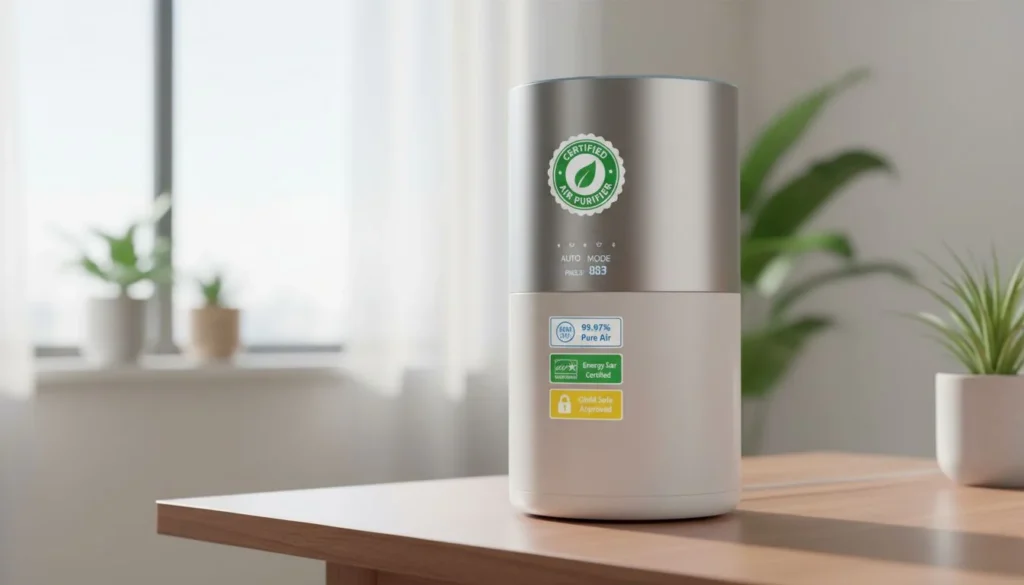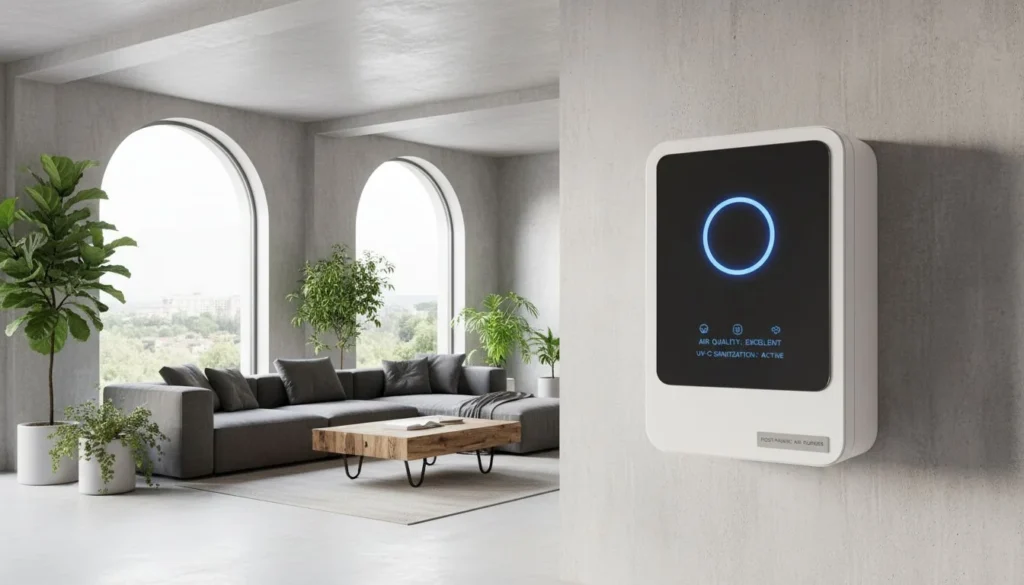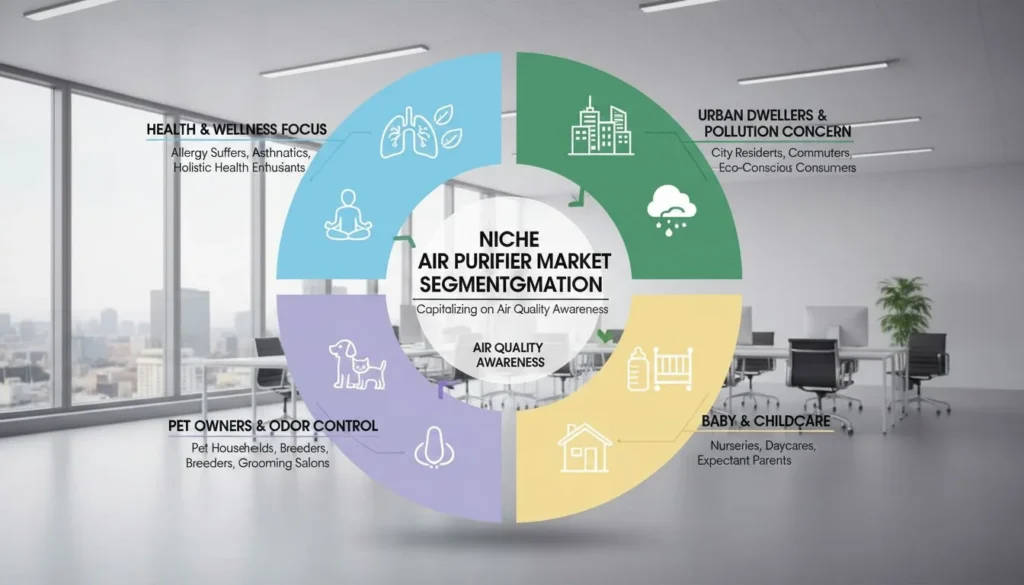إن الهواء الذي نتنفسه هو أكثر من مجرد ضرورة؛ فهو عنصر حاسم في رفاهيتنا. ومع ازدياد الوعي العالمي بجودة الهواء، تزدهر صناعة أجهزة تنقية الهواء بشكل لم يسبق له مثيل.
تحتل الصين الصدارة في إنتاج أجهزة تنقية الهواء بسبب سلسلة التوريد القوية وخبرتها الطويلة في التصنيع. ومع ذلك، فإن وجود الهند آخذ في النمو، مدفوعًا بمصانع التجميع الجديدة التي تستفيد من المواد المستوردة من الصين لتلبية الطلبات المتزايدة والتحايل على التعريفات الجمركية.
Understanding the dynamics of جهاز تنقية الهواء production between China and India offers invaluable insights for businesses and consumers alike. Dive deeper to discover the competitive advantages, market strategies, and future prospects shaping this industry's landscape.
تتصدر الصين إنتاج أجهزة تنقية الهواء على مستوى العالم.صحيح
إن سلسلة التوريد الواسعة التي تتمتع بها الصين وخبرتها التصنيعية تجعلها رائدة في هذا المجال.
ما الذي يجعل الصين لاعبًا مهيمنًا في تصنيع أجهزة تنقية الهواء؟
تستند هيمنة الصين في مجال تصنيع أجهزة تنقية الهواء إلى سلسلة التوريد الواسعة وخبرتها.
تتفوق الصين في مجال تصنيع أجهزة تنقية الهواء بفضل سلسلة التوريد الشاملة والتكنولوجيا المتقدمة والخبرة الواسعة التي تتمتع بها، مما يجعلها المركز العالمي الرائد.
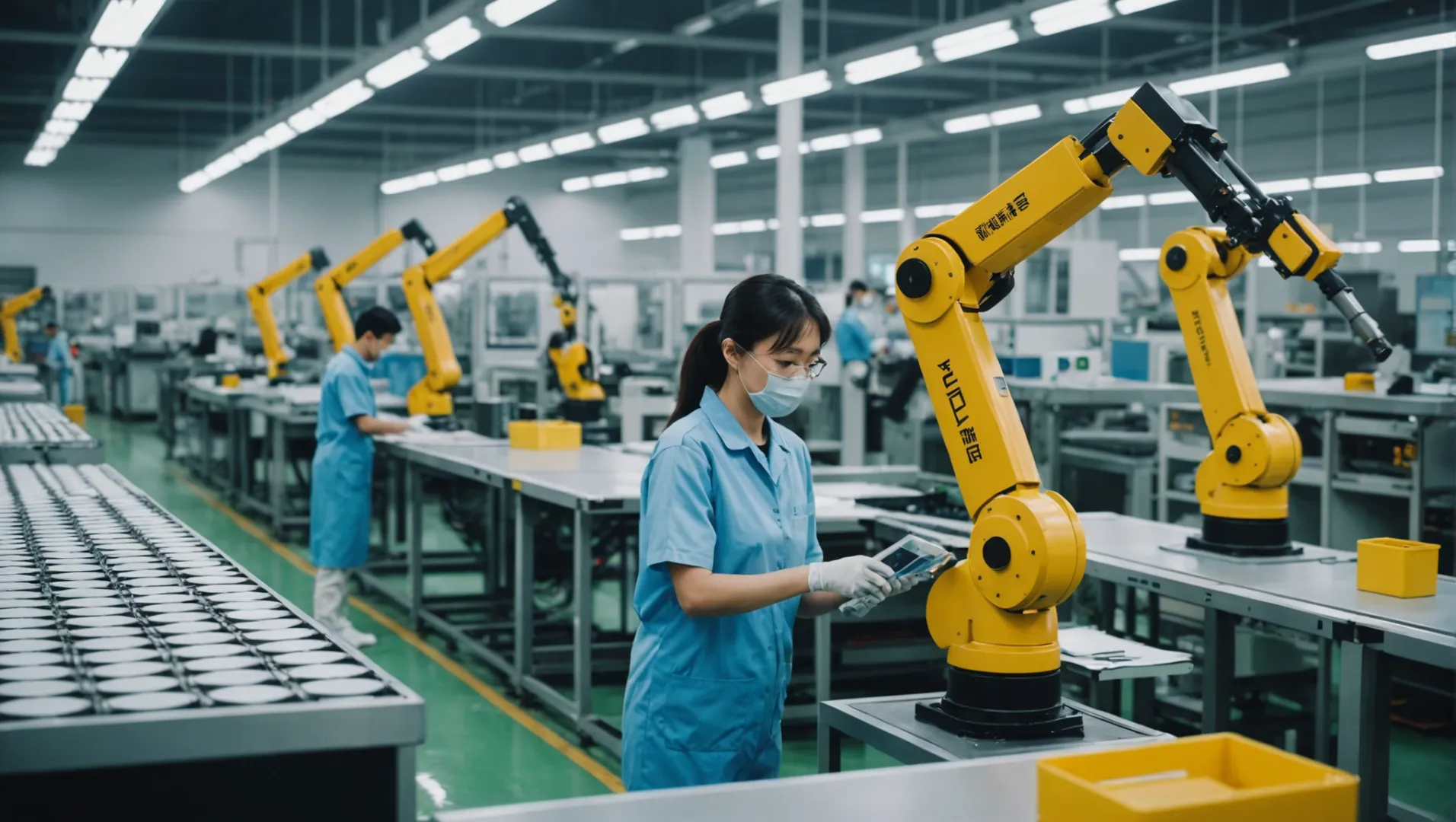
بنية تحتية واسعة النطاق لسلسلة التوريد
One of the primary reasons China has secured its place as a leader in air purifier manufacturing is its well-established supply chain infrastructure. Over decades, China has developed a network of suppliers that provide everything from raw materials to cutting-edge technology. This integrated approach allows manufacturers to keep costs low and production efficient. For businesses, this means they can benefit from competitive pricing and rapid production cycles, essential in a fast-paced global market.
قدرات التصنيع المتقدمة
لقد استثمرت الصين بكثافة في تقنيات ومرافق التصنيع، مما يضمن استيفاء معايير الإنتاج عالية الجودة. وقد أصبح هذا البلد مرادفاً لـ الابتكار وقابلية التوسع1حيث تقدم مجموعة من المنتجات بدءًا من الموديلات الصديقة للميزانية إلى أجهزة تنقية المياه المتطورة المزودة بأحدث التقنيات. ولم تقتصر هذه الإمكانيات على تلبية الاحتياجات المحلية فحسب، بل إنها تلبي أيضاً احتياجات الأسواق العالمية، مما عزز هيمنة الصين.
التموضع الاستراتيجي في السوق
إن الموقع الاستراتيجي للمصنعين الصينيين يمكّنهم من تلبية الطلبات المختلفة على مستوى العالم. ومن خلال فهم احتياجات المستهلكين في مختلف المناطق، يمكن للشركات الصينية تكييف منتجاتها مع احتياجات المستهلكين في مختلف المناطق، حيث تقدم ميزات مثل ترشيح HEPA والاتصال الذكي. هذه القدرة على التكيف أمر بالغ الأهمية مع تزايد وعي المستهلكين بقضايا جودة الهواء.
خبرة طويلة الأمد
الخبرة مهمة في التصنيع، والصين لديها سنوات من الخبرة. تنعكس خبرة البلاد في قدرتها على الابتكار والتكيف بسرعة مع ديناميكيات السوق المتغيرة. وتعني هذه الخبرة الطويلة الأمد أن المصنعين الصينيين قادرون على توقع اتجاهات السوق واحتياجاته بفعالية. ونتيجة لذلك، فإنهم يحافظون على ميزة تنافسية على اللاعبين الناشئين مثل الهند.
التحديات والفرص
وعلى الرغم من نقاط القوة هذه، إلا أن هناك تحديات مثل التعريفات الجمركية الدولية والمخاوف البيئية التي يجب على المصنعين الصينيين التعامل معها. ومع ذلك، فإن هذه التحديات توفر أيضًا فرصًا للتنويع في مناطق وأسواق أخرى.
وخلاصة القول، فإن الصين الهيمنة في تصنيع أجهزة تنقية الهواء2 إلى سلسلة التوريد الشاملة، والتقنيات المتقدمة، وعقود من الخبرة التي تخلق معًا حضورًا هائلاً في السوق العالمية.
تحافظ سلسلة التوريد في الصين على انخفاض تكاليف أجهزة تنقية الهواء.صحيح
تتيح سلسلة التوريد المتكاملة في الصين إنتاجاً فعالاً من حيث التكلفة.
تفتقر الصين إلى تقنيات التصنيع المتقدمة لأجهزة التنقية.خطأ
استثمرت الصين بكثافة في تقنيات التصنيع المتقدمة.
كيف يتطور سوق أجهزة تنقية الهواء في الهند؟
يقف سوق أجهزة تنقية الهواء في الهند على أعتاب مرحلة تحوّل، مدفوعًا بالتحولات الاستراتيجية.
يتطور سوق أجهزة تنقية الهواء في الهند من خلال عمليات التجميع الاستراتيجي باستخدام المكونات المستوردة، بهدف التغلب على الحواجز الجمركية وتلبية الطلبات المحلية والدولية.
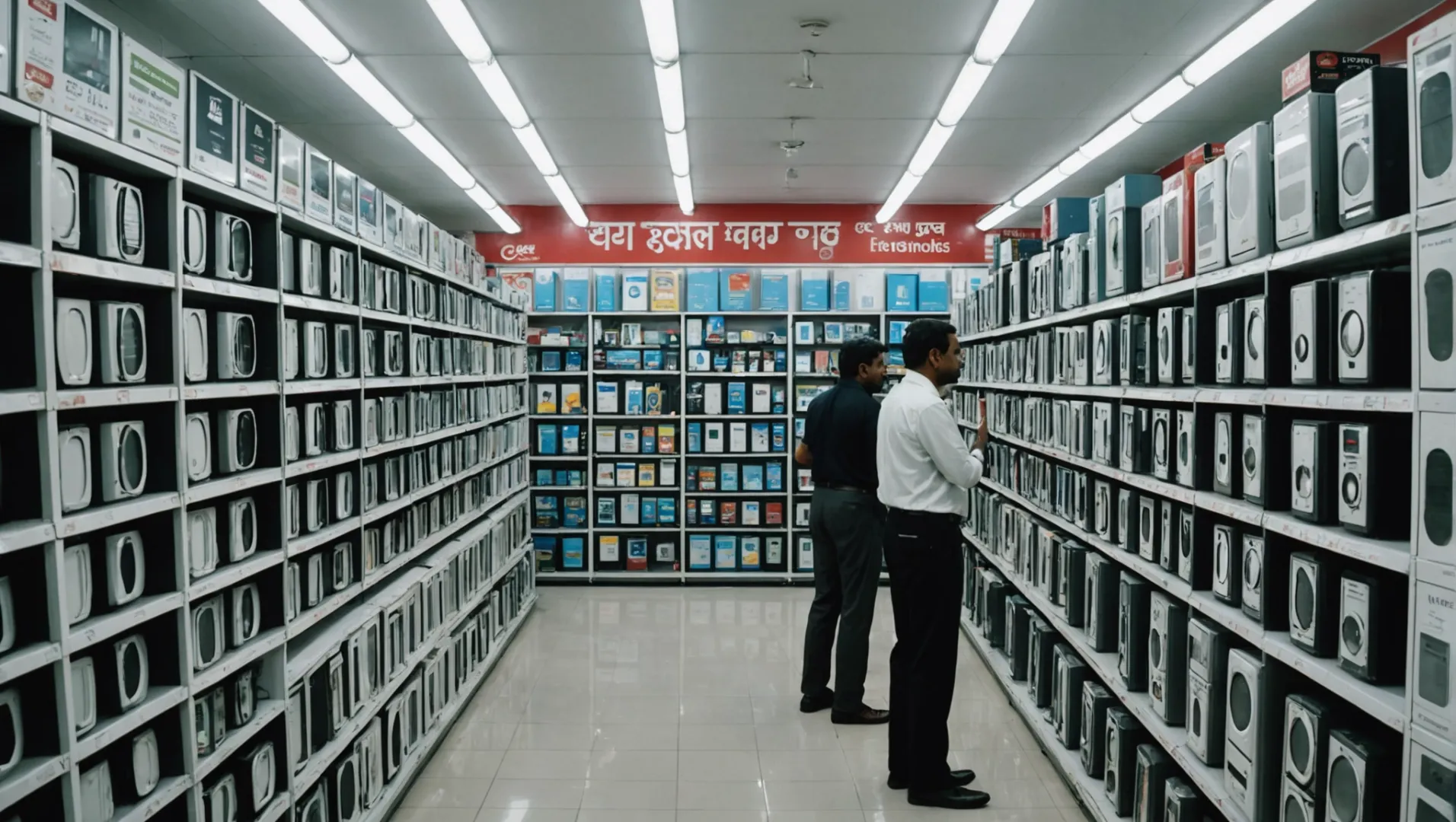
ارتفاع الطلب المحلي المتزايد
أدت الزيادة في مستويات تلوث الهواء في جميع أنحاء المدن الهندية إلى زيادة كبيرة في الطلب على أجهزة تنقية الهواء. ومع تزايد الوعي بالصحة والعافية، يستثمر المزيد من الأسر الحضرية في هذه الأجهزة. ولا يؤدي هذا الطلب المتزايد إلى زيادة المبيعات فحسب، بل يجذب أيضًا المصنعين الأجانب لاستكشاف الفرص المتاحة داخل الهند.
عمليات التجميع الاستراتيجي
وللتحايل على التعريفات الجمركية المرتفعة على الواردات، تتبنى العديد من الشركات نظام شبهس.ك.د). وينطوي ذلك على استيراد المكونات الرئيسية من بلدان مثل الصين وتجميعها محلياً. وتتيح هذه الاستراتيجية للمصنعين تقديم منتجات بأسعار تنافسية مع تعزيز خلق فرص العمل المحلية وتنمية المهارات. وتمهد مثل هذه العمليات الطريق لعمليات أكثر قوة. النظام البيئي التصنيعي3.
المبادرات والدعم الحكومي
تشجع مبادرات الحكومة الهندية مثل مبادرة "اصنع في الهند" والسياسات المواتية للاستثمار الأجنبي المباشر (FDI) الشركات العالمية على إنشاء قواعد تصنيع في الهند. على الرغم من أن سوق أجهزة تنقية الهواء تهيمن عليه الواردات حاليًا، إلا أن هذه السياسات قد تؤدي إلى زيادة الإنتاج المحلي، مما يقلل من الاعتماد على الواردات الصينية.
الميزة النسبية للهند
وعلى الرغم من أن الهند قد لا تكون الخيار الأول لنقل وحدات التصنيع مقارنةً ببلدان جنوب شرق آسيا مثل فيتنام أو تايلاند، إلا أنها توفر إمكانات سوق محلية كبيرة. كما أن وجود طبقة متوسطة مزدهرة ذات قوة شرائية متزايدة يجعل من الهند فرصة جذابة للاستثمارات المستقبلية.
تأثير ديناميكيات التجارة الدولية
تؤثر سياسات التجارة الدولية والتعريفات الجمركية بشكل كبير على استراتيجيات الإنتاج. ومع فرض التعريفات الجمركية على الواردات الصينية في أسواق مثل الولايات المتحدة، هناك اتجاه متزايد نحو تنويع قواعد التصنيع. ومن المتوقع أن تستفيد الهند من هذه التحولات، وإن كان ذلك بشكل تدريجي، حيث تتطلع الشركات إلى التخفيف من المخاطر المرتبطة بالاعتماد المفرط على بلد واحد.
الآفاق المستقبلية
ويتوقف تطور سوق أجهزة تنقية الهواء في الهند على استمرار نمو الطلب، والتنفيذ الفعال للسياسات، والتقدم في البنية التحتية. ومع ازدياد الوعي البيئي وتحسن التكنولوجيا، يمكن أن تشهد إمكانات الهند كلاعب رئيسي في صناعة أجهزة تنقية الهواء العالمية تطورات ملحوظة.
إن سوق أجهزة تنقية الهواء في الهند مدفوعة بعمليات SKD.صحيح
تساعد عمليات SKD في تقليل التعريفات الجمركية وتعزيز التصنيع المحلي.
لا يتأثر سوق أجهزة تنقية الهواء في الهند بالسياسات الحكومية.خطأ
تشجع المبادرات الحكومية مثل "اصنع في الهند" الإنتاج المحلي.
ما الدور الذي تلعبه التعريفات الجمركية في تشكيل استراتيجيات الإنتاج؟
في عصر التجارة المعولمة، تؤثر التعريفات الجمركية بشكل كبير على مكان وكيفية تصنيع المنتجات.
تجبر التعريفات الجمركية المصنعين على إعادة تقييم استراتيجيات الإنتاج، مما يؤدي في كثير من الأحيان إلى نقل مصانع التجميع إلى مناطق معقولة التعريفات. وتساعد إعادة التنظيم هذه على خفض التكاليف والحفاظ على الأسعار التنافسية في الأسواق المستهدفة.
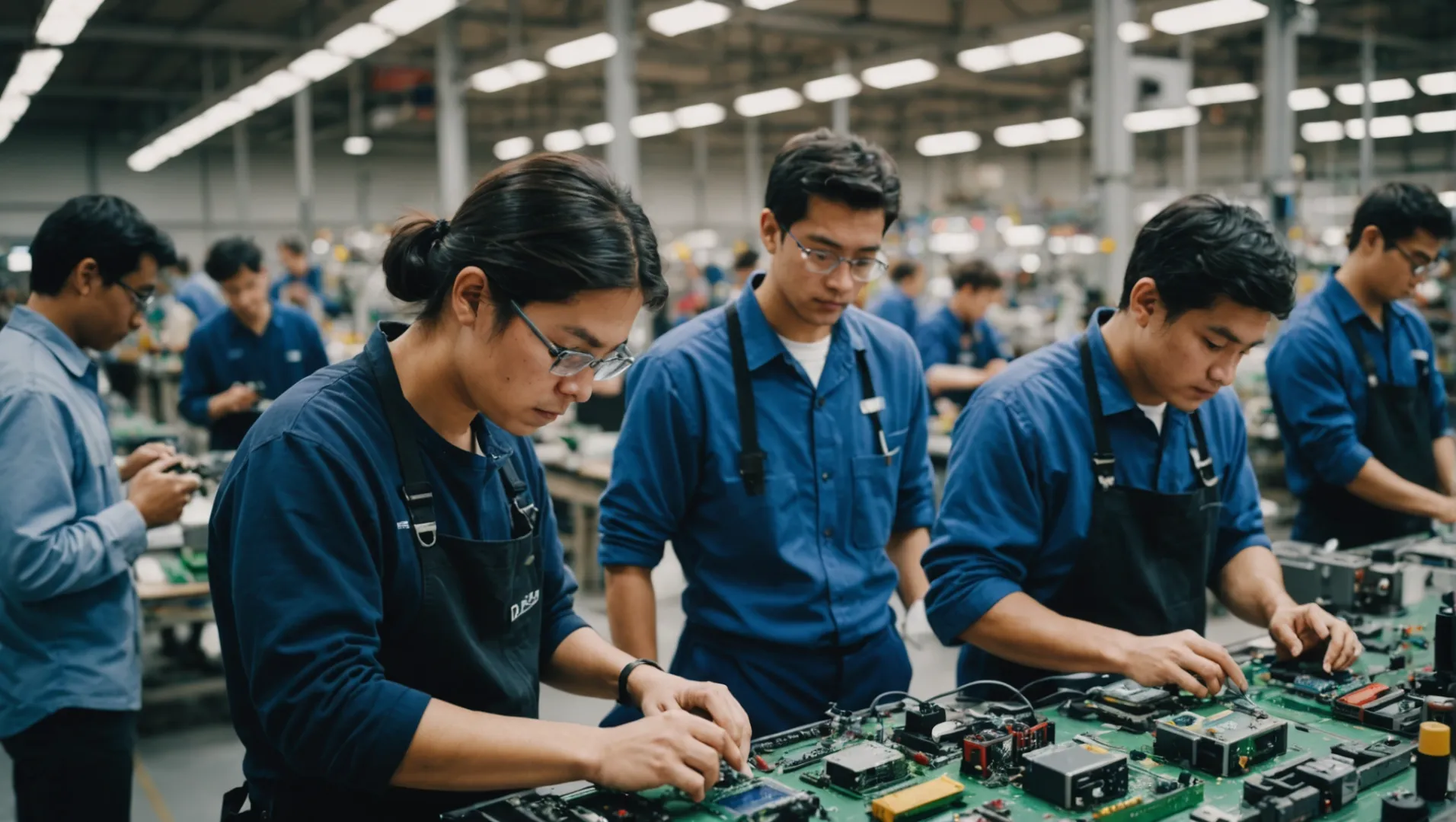
تأثير التعريفات الجمركية على التصنيع العالمي
تلعب التعريفات الجمركية دورًا حاسمًا في تشكيل مشهد التصنيع العالمي من خلال التأثير على المكان الذي تختاره الشركات لإنتاج سلعها. على سبيل المثال، دفعت التعريفات الجمركية المرتفعة التي فرضتها الولايات المتحدة على السلع الصينية الشركات المصنعة إلى استكشاف بدائل خارج الصين للحفاظ على الربحية وتجنب ارتفاع الأسعار.
النقل والتجميع الاستراتيجي
تتمثل إحدى الاستراتيجيات الشائعة في نقل عمليات التجميع إلى بلدان ذات شروط تجارية أكثر ملاءمة. وفي مجال صناعة أجهزة تنقية الهواء، قد تختار الشركات ما يلي شبه مهزوم (س.ك.د) التجميع4 في الهند. ينطوي هذا النهج على استيراد المكونات من الصين وتجميعها في الهند، وبالتالي تقليل التعريفات الجمركية على الواردات وتعزيز فعالية التكلفة.
تحليل مقارن: الهند مقابل جنوب شرق آسيا
في حين أن الهند أصبحت خياراً قابلاً للتطبيق بالنسبة لـ س.ك.د نظرًا لهياكلها الجمركية، تظل دول جنوب شرق آسيا الأخرى مثل فيتنام وماليزيا وتايلاند جذابة بسبب بنيتها التحتية الراسخة وقربها من الصين.
| البلد | المزايا | التحديات |
|---|---|---|
| الهند | التعريفات الجمركية المواتية وإمكانات السوق المتنامية | محدودية الطلب الحالي في السوق |
| فيتنام | خدمات لوجستية راسخة، أقرب إلى الصين | سوق ناشئة، لا تزال تتطور فيها البنية التحتية |
| ماليزيا | اتفاقيات تجارية قوية وقوى عاملة ماهرة | سوق محلية أصغر مقارنة بغيرها |
| تايلاند | قطاع التصنيع المتنوع | الديناميكيات الإقليمية التنافسية |
الآثار طويلة الأجل المترتبة على استراتيجيات الإنتاج
مع استمرار تقلب التعريفات الجمركية بناءً على السياسات التجارية الدولية، يجب على المصنعين أن يظلوا مرنين. وقد تنطوي الاستراتيجيات طويلة الأجل على تنويع مواقع الإنتاج والاستثمار في البلدان ذات السياسات الاقتصادية والاتفاقيات التجارية المستقرة.
ستحافظ الشركات التي يمكنها التعامل مع هذه البيئات التجارية المعقدة بفعالية على ميزتها التنافسية في السوق العالمية. إن فهم هذه الديناميكيات أمر بالغ الأهمية بالنسبة لأصحاب المصلحة الذين يسعون إلى تحسين استراتيجيات الإنتاج الخاصة بهم استجابةً للتغيرات في مشهد التعريفات الجمركية.
غالبًا ما تؤدي التعريفات الجمركية إلى نقل مصانع التجميع.صحيح
تؤثر التعريفات الجمركية على المصنعين لنقل عملياتهم إلى المناطق الصديقة للتعريفات الجمركية.
الهند أقل ملاءمة من فيتنام لتجميع SKD.خطأ
تقدم الهند تعريفات مواتية، مما يجعلها موقعًا مناسبًا للتطوير السكني.
هل هناك بدائل مجدية لأجهزة تنقية الهواء الصينية الصنع؟
With concerns over supply chains, many are seeking alternatives to Chinese-made air purifiers.
نعم، توجد بدائل قابلة للتطبيق لأجهزة تنقية الهواء الصينية الصنع. تقدم العلامات التجارية من دول مثل الولايات المتحدة واليابان وكوريا الجنوبية والأسواق الناشئة في الهند منتجات منافسة. وغالبًا ما تركز هذه البدائل على التقنيات المبتكرة والاستدامة واحتياجات السوق المحلية، مما يجذب المستهلكين الذين يعطون الأولوية للجودة والمصادر الأخلاقية.
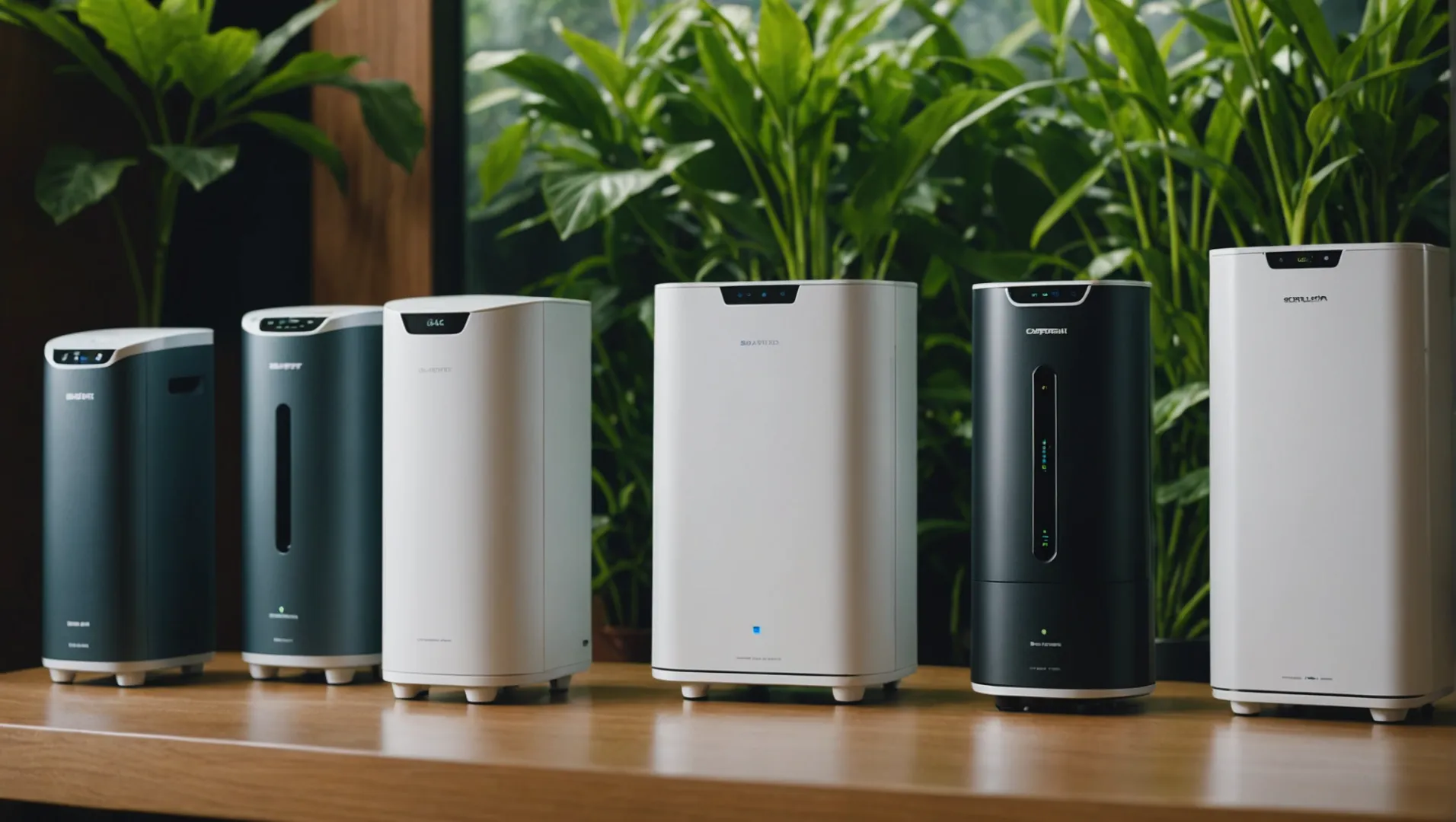
استكشاف ماركات أجهزة تنقية الهواء العالمية
مع توسع سوق أجهزة تنقية الهواء، برزت العديد من البلدان كبدائل محتملة لبراعة الصين في التصنيع. و الولايات المتحدة الأمريكية5 و اليابان6 تشتهر بمعايير الإنتاج عالية الجودة والتكنولوجيا المبتكرة. وتعطي هذه الدول الأولوية لأساليب الترشيح المتقدمة والميزات الذكية التي تلبي احتياجات المستهلكين البارعين في مجال التكنولوجيا.
دور الابتكار في كوريا الجنوبية
حققت كوريا الجنوبية خطوات كبيرة في صناعة الأجهزة المنزلية. علامات تجارية مثل سامسونج7 و إل جي8 توفر أجهزة تنقية الهواء التي تدمج إنترنت الأشياء (إنترنت الأشياء)، مما يسمح للمستخدمين بمراقبة جودة الهواء عن بُعد عبر الهواتف الذكية. تجذب مثل هذه الابتكارات سوقاً متنامية من المستهلكين الرقميين الذين يسعون إلى الاندماج السلس في منازلهم الذكية.
الدور الناشئ للسوق الهندية
في حين لا تزال الهند تعمل على تطوير إنتاجها المحلي من أجهزة تنقية الهواء، إلا أنها تعتبر مركز تجميع واعد للعلامات التجارية العالمية التي تتطلع إلى الاستفادة من انخفاض الرسوم الجمركية وتكاليف الإنتاج. تُعرف استراتيجية استيراد المكونات من الصين لتجميعها في الهند، والمعروفة باسم س.ك.د (Semi Knocked Down)، يسمح بالتوزيع الفعال من حيث التكلفة في السوق الأمريكية بسبب انخفاض رسوم الاستيراد. ومع نمو هذا الاتجاه، يمكن للمستهلكين أن يتوقعوا خيارات أكثر بأسعار معقولة مع أداء مماثل للنماذج الصينية.
الاستدامة والإنتاج الأخلاقي
يولي المستهلكون أولوية متزايدة للاستدامة، مما يؤدي إلى زيادة الطلب على أجهزة تنقية الهواء الصديقة للبيئة والمنتجة بطريقة أخلاقية. وتقود الشركات في أوروبا هذا الطلب من خلال التركيز على المواد المستدامة والتصميمات الموفرة للطاقة. لا تجذب هذه الممارسات المستهلكين المهتمين بالبيئة فحسب، بل تتماشى أيضًا مع أهداف الاستدامة العالمية.
الجودة مقابل التكلفة: ما الذي يجب على المستهلكين أخذه بعين الاعتبار؟
عند تقييم البدائل، يجب على المستهلكين تقييم عوامل مثل طول عمر المنتج، وكفاءة الطاقة، وتكاليف استبدال الفلتر، وخدمة ما بعد البيع. على الرغم من أن العلامات التجارية غير الصينية قد تكون أعلى سعراً، إلا أنها غالباً ما تقدم ضمانات وخدمة عملاء متفوقة.
باختصار، في حين لا تزال الصين قوة مهيمنة في تصنيع أجهزة تنقية الهواء، تتوفر بدائل قابلة للتطبيق في جميع أنحاء العالم. تلبي هذه البدائل تفضيلات المستهلكين المختلفة، بدءًا من التكنولوجيا المتطورة إلى الممارسات المستدامة.
تشتهر أجهزة تنقية الهواء الأمريكية بميزاتها الذكية.صحيح
تركز العلامات التجارية الأمريكية على الترشيح المتقدم والتكنولوجيا الذكية.
تصدر الهند أجهزة تنقية الهواء المجمعة بالكامل إلى جميع أنحاء العالم.خطأ
تقوم الهند بتجميع أجهزة تنقية الهواء باستخدام طريقة SKD للتوزيع المحلي.
الخاتمة
While China remains a powerhouse in air purifier production, India's potential is burgeoning. As market demands and tariffs evolve, keeping an eye on these shifts can inform smarter purchasing decisions.
-
استكشف التقدم الذي أحرزته الصين في تكنولوجيا التصنيع ومزايا قابلية التوسع..: وصلت الصين إلى مرحلة جديدة في تطورها الاقتصادي، مع قدرات ابتكارية أكبر بكثير في جامعاتها وشركاتها المحلية. ↩
-
افهم لماذا تتصدر الصين إنتاج أجهزة تنقية الهواء عالميًا..: تتصدر الصين حاليًا إنتاج أجهزة تنقية الهواء، حيث تتميز بكفاءة التكلفة والقدرة الإنتاجية والبحث والتطوير ... ↩
-
استكشف كيف تعزز عمليات التفكيك حسب الطلب كفاءة التكلفة والعمالة المحلية...: تُعدّ عملية تفريغ حمض الكربونيك في SKD حلًا وسطًا بين عملية التفكيك في المصنع ووحدة التخزين المركزي، وهي تتطلب عملاً أقل قليلاً من عملية التفكيك في المصنع، حيث يتم تقليل خطوات فحص الجودة. ↩
-
تعرف كيف يساعد تجميع SKD في تقليل تكاليف الإنتاج....: مركبة تعمل بكامل طاقتها، يتم تصنيعها في مصنع التصنيع في البلد الأم، قبل نقلها إلى ورشة عمل حيث يتم تفكيكها أو ... ↩
-
استكشف العلامات التجارية الأمريكية الرائدة المعروفة بتكنولوجيا تنقية الهواء المبتكرة: في بحثي، وجدتُ مراراً وتكراراً أن Molekule و Blueair و Levoit موصى بها كخيارات أفضل في فئتها. لذا، جربت الثلاثة. وفيما يلي، سأقدم أدناه معلومات عن ... ↩
-
اكتشف كيف تتفوق العلامات التجارية اليابانية في ابتكار تنقية الهواء ..: جهاز تنقية الهواء FU-L30-W من شارب FU-L30-W جهاز تنقية الهواء بلازما كلاستر 7000 - أحدث موديل - منطقة لقاح الفيروسات 10 تاتامي - أبيض. السعر العادي: $340.00. سعر التخفيض: $340.00 تخفيض السعر: $340.00. ↩
-
تعرّف على ميزات سامسونج الذكية في أجهزة تنقية الهواء الخاصة بها: تحتوي العديد من أجهزة تنقية الهواء لدينا على أنظمة تنقية الهواء المبتكرة HEPA التي تزيل 99.97% من الغبار فائق الدقة 0.3㎛، وتعيق انتشار البكتيريا الملتقطة، ... ↩
-
افهم نهج LG لدمج إنترنت الأشياء في أجهزة تنقية الهواء...: تشغيل هادئ. مع مستويات ضوضاء منخفضة تصل إلى 23 ديسيبل، ينظف جهاز تنقية الهواء الذكي من إل جي الهواء مع الحفاظ على هدوء وراحة المكان. تصميم مناسب للأطفال ... ↩


